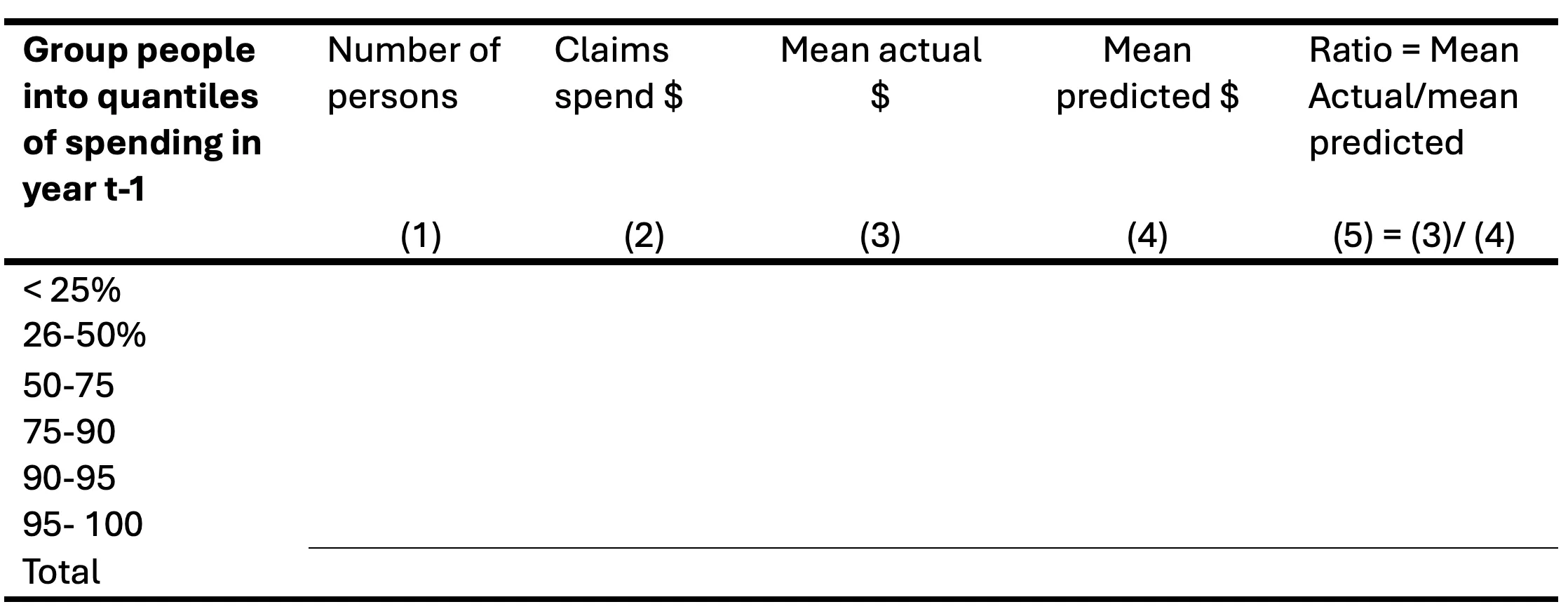Actuarial careers
Industry topics

Claim your CPD points
In the realm of health policy, designing effective risk equalisation (RE) systems in private health insurance (PHI) is challenging.
Risk equalisation is not a one-off reform but a mechanism that ought to evolve over time to remain relevant and effective. It exists within a complex network of stakeholders — including government, private insurers, regulators, providers and consumers. That makes broad agreement on goals and measurement essential. But before we can track progress, we must ask: What are we trying to achieve? And how will we know if we’re getting there?
Much like the actuarial control cycle in action, RE systems benefit from monitoring and evaluation to ensure alignment with their intended purpose. This article focuses on how we can measure progress toward that purpose and, where necessary, make adaptions.
Every effective RE system begins with a clearly articulated mission. A broad core objective:
To ensure each applicant whom an insurer must accept forms an equal insurance risk for the insurer while preserving incentives for cost control.
For reasons of fairness, Australia’s PHI relies on community-rating. A disadvantage of community-rating is that it presents insurers with predictable profits on young and healthy enrolees and predictable losses on the elderly and chronically ill.
Without further policy measures, these predictable profits and losses confront insurers with incentives for risk selection. Despite open enrolment, risk selection can take place indirectly, e.g., via the marketing and design of insurance plans.
Risk selection can lead to undesirable effects. For example, insurers can decide not to cover high value treatments that would attract unprofitable risk types (e.g., those with expensive chronic diseases). Risk selection can also contribute to product proliferation as insurers are incentivised to design new products to attract the young and healthy.
Moreover, when the young and healthy sort into different insurance plans than the elderly and chronically ill, insurers will be confronted with (huge) differences in mean claims between insurance plans. This difference can threaten fairness (when, on average, the young and healthy pay a lower premium than the elderly and chronically ill) and distort the playing field (when some insurers have disproportionate shares of elderly and chronically ill people). By reducing predictable profits and losses, risk equalisation is meant to avoid these selection problems.
This clarity of purpose is not just a starting point — it is the foundation for coordinated reform and long-term impact. A shared understanding of this goal enables stakeholders to align their efforts and expectations. In a recent article, I focused on purposeful risk equalisation which you can catch up on here .
RE reform is inherently collaborative. It requires the engagement of diverse stakeholders, including regulators, insurers and analysts who each bring unique perspectives and priorities. Agreement on the system’s design, particularly its measurement framework, is a critical early step.
Once a broad goal is established, stakeholders can develop and agree upon measurement systems to evaluate the impact of RE. These systems enable ongoing monitoring and evaluation, ensuring that the RE mechanism is functioning as intended and adapting as needed.
Note that, like goals and measurement, stakeholder membership evolves over time. Without an engaged constituency with the power to make and enact decisions to the scale needed to accomplish the goals, effectiveness is unlikely.
This is where vision becomes action. Measurement systems are the tools that translate goals into tangible outcomes. They allow us to assess:
A well-functioning RE system offers a stable foundation. A system that meets its goals today may do so more effectively tomorrow if improved. The presence of success should invite reflection, not complacency.
Data may reveal gaps, unintended consequences or emerging risks. In these moments, robust measurement systems prove their worth, providing the evidence needed to refine and improve the RE model.
In Australia, we can’t point to a stated purpose in legislation or in official documentation. There are plenty of materials describing how risk equalisation works. If a reader can refer to a stated purpose, then do let us know. If there was, a broadly agree purpose it might include a goal along the lines:
To reduce predictable profits and losses across health funds (i.e., to equalise risks) while keeping incentives for cost control.
Then, we could develop measures to test emerging experiences relative to this goal. For example, the table below shows a possible measure. It starts with listing persons according to spending (hospital and medical) in year t-1 from low to high and then grouping for the table below:
Table: Purpose – To give an indication of the extent to which a risk equalisation model compensates for predictable profits and losses.

For each group measure, the mean predicted “insurer spending” (i.e., healthcare costs covered by insurance) based on a model or formula applied to each person in that group. This could be benchmarked by the country. To estimate ‘predicted’ would require a model to be established.
Many insurers will want to see this at an insurer level. While this is of interest, it is important to be careful with under/overcompensation per insurer. The reason is that cost differences between insurers are not only caused by “variation in consumer risk” (which we want to compensate for via RE) but also due to “variation in cost efficiency” (which we do not want to compensate for via RE). So, interpretation of under/overcompensation at the insurer level will require judgements about “variation in risk” vs. “variation in efficiency”.
There are also measures used in countries that can be explored such as those listed in the reference below.
In Australia, risk equalisation in private health insurance hasn’t fundamentally changed in 15 years. And to be fair — it’s worked. It’s helped balance costs, protect older Australians and support community rating. So, it’s no surprise that we could respond to the idea of change with, “Why fix what isn’t broken?”
But, what if it’s not about fixing but evolving? What if it’s not broken but also not as effective as it could be?
Health systems are dynamic. Demographic shifts, technological advances and evolving policy priorities all influence how well a risk equalisation system performs. A system designed for one context may become less optimal in another. Continuous improvement ensures that the system remains aligned with its goals.
If there is a better or more optimal way to meet these goals, feedback ought to prompt adjustments to enhance outcomes and maintain alignment with policy priorities.
A broad purpose and measuring progress are a necessary component. However, the question arises: If stakeholders are aware of the need to course correct, why is there stasis in some national systems? This then results in us considering what else is needed for a “platform for improvement”.
Measurement systems are more than technical tools — they are the bridge between purpose and progress. They allow us to monitor goal attainment, benchmark performance and make informed adaptions. Countries that continuously measure and evaluate RE performance demonstrate better outcomes over time.
In risk equalisation, long-term policy success requires more than a well-defined purpose. It depends on the system’s ability to be measured, monitored, and adapted over time.
In this article, we focus specifically on the role of measures: the criteria and metrics needed to assess whether the system is achieving its goals. While other enablers (e.g., legislation, governance, and trust) are essential design elements, meaningful measurement is a foundation for making adaptions, and continuous improvement.